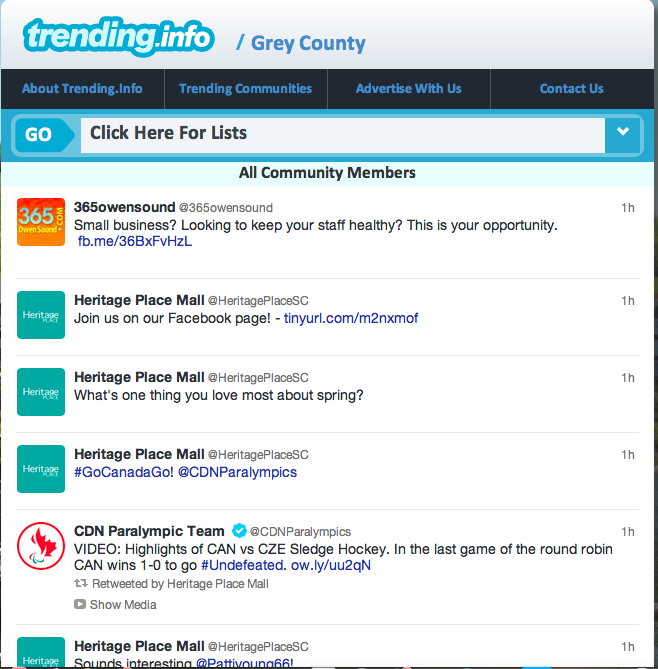Now the more than 5,000 Canadian-based Shopify retailers can use the same software that powers their digital storefronts in the real world.
“You can sell in store, you can sell on the go using our mobile phone app, and you can sell online using one system,” said Adam Mcnamara, vice president of product at Shopify, during the company’s recent pop-up event in Toronto. “What we’ve managed to do is bridge the gap between online retail and in-store retail in a way that’s approachable by small business owners.”
Retailers using the POS system for in-store payments, which attaches to any Apple mobile device, will now be able to put their business online and accept credit card payments with the push of a single button. At the same time digital retailers will be able to accept cash and card payments at pop-up shops and brick and mortar storefronts using the same software that powers their online storefront.
Mcnamara believes that at $49 a month for unlimited payments and locations, and credit card rates as low as 2.1 per cent, the Shopify POS system will have no problem competing with similar payment processing systems such as Square, which charges retailers a flat 2.75 per cent on all transactions with no monthly fees. He also believes the lower price point will translate into a better shopping experience for consumers.
“For the customer, lower prices to accept credit cards translates into lower price to sell products, so we’re hoping to bring down the merchant’s overhead so they can run a really streamlined, polished business, which translates into savings for the people who shop there,” he said.
Other features, such as automatically emailing receipts to customers and faster payment processing have the potential to improve the retail shopping experience for customers, but the real selling point for Canadian small businesses is the ease of having all their vital sales information in a single location.
“It’s the same interface, it’s the same setup for inventory and product and customers and orders, all managed in one place,” said Mcnamara. “From a merchant’s perspective, I understand my business better, managing outstanding orders and coordinating by customers becomes easier — it’s a quality of life improvement.”
While negotiations with Canadian banks forced Shopify to provide the service in the United States first, Mcnamara is excited to bring the POS system back to where it all began.
“We’re a Canadian company, and we’re really proud to finally bring Shopify Point of Sale back home to Canada now that we’re worked with the banks to allow us to accept credit cards here as well,” he said.
Photos courtesy Andrew Williamson
“Instead of bioengineering costing millions and taking years of your life, it costs just thousands now and takes months, and in fact it could be just hundreds of dollars and days,” said Dickie. “If the cost is going down, that means more people are going to get involved, and not just more people in big companies and governments, it will be designers and students and mothers. They’ll come up with really interesting ideas that were never thought of before, just like what happened in computing.”
Dickie, along with co-founders Justin Pahara, Pantea Razzaghi, and Mason Edwards have created an ‘open science’ platform called Synbiota, which provides complete access to some of the 400 projects currently being pursued by its 800 users.
The platform provides users with access to researcher’s electronic lab books, allowing them to either collaborate or build off of research that is already being conducted. It also allows for Twitter-like mentions, attributions, and hashtags, to provide users the ability quickly find existing research in areas of interest. This means that instead of requiring a lab and a research grant, everyday people can contribute their research and ideas from an iPad at a coffee shop.
“In terms of user experience for collaboration, we’re using the common tools that remote collaboration has been doing for the past 20 years in computing,” said Dickie.“A person who’s interested can inspect a project and look at any DNA codes that has been stored in that project, they can look at any lab notes and lab book entries and experimental results that have been included in that project, they can ask to join a project, and if they think there is valuable stuff in that project they can fork it into their own repository.”
Dickie adds that Synbiota has also recently partnered with a venture capital firm in Ireland called SOSventures, which has opened up a $300,000 fund to finance some of the projects that result from the platform, and provide an incubator-like environment for the life science innovations.
“People that come on our platform, they can sign up, start projects, do research, bring in colleagues, and they can also take their projects to a marketplace that we provide,” said Dickie. “The idea is to really empower the user with the full capabilities, from research right to market.”
Dickie believes that these tools will be vital in empowering everyday people to contribute to biotechnology projects, and while DNA coding isn’t as common today as computer coding, Synbiota has had some encouraging signs that the industry is moving towards the mainstream.
“We won the South By Southwest interactive accelerator, and we got the top prize in the innovative world technologies category, and that was fantastic for us because it really is proof positive that synthetic biology and this new type of biotech is breaking into popular culture,” he said.
Just as computing was once only accessible to major corporations and government entities, Dickie hopes that biotech will soon break free from the lab environment, allowing everyday people to contribute their innovations to a ‘bio app store.’
Harvey Medcalf, co-founder and CEO of Arroware Industries and self-described “tech junkie and privacy advocate” recently launched myApollo, a social media application that hopes to address some of those privacy concerns.
“We want to create the exact same experience, but do it in a manner that’s inherently a lot more private,” he said. “We wanted to build something where users wouldn’t have to worry about a third party watching over their shoulder — something that gave them piece of mind knowing they retain ownership of the material they put online.”
 What makes myApollo unique is that it runs on a decentralized peer-to-peer network so that all conversations, pictures, and user generated content is stored on the device of the user and those in their network. This is in direct opposition to traditional social media sites that store their data on a single server. Data is also encrypted so that it is only available to the intended recipient.
What makes myApollo unique is that it runs on a decentralized peer-to-peer network so that all conversations, pictures, and user generated content is stored on the device of the user and those in their network. This is in direct opposition to traditional social media sites that store their data on a single server. Data is also encrypted so that it is only available to the intended recipient.
“The risk of having all of that information and profile and behaviour all in a single infrastructure somewhere is that someone could potentially compromise it and start pulling out information,” said Tom Moss, director of products and services for security software company Trend Micro Inc. “Even if you trust the service provider to deal responsibly with that information, a compromise to that information means that it could end up in third party hands.”
Moss added that social media users who share a lot of personal information are more susceptible to the threat of identity theft. If someone wanted to create a fraudulent credit profile most of the information they would require is available on social media sites, and the rest can be attained more easily once a malicious user has learned their target’s online habits.
“If somebody decides they want to steal your identity (and) try and open a credit card account or try and open a bank account, you’re essentially facilitating that by sharing all this information,” he said.
It is those types of security concerns that Medcalf hopes to address with myApollo.
“With people that are out there trying to cause mischief in the digital realm, (social media users) can be a very easy target,” he said. “Just by architecting the system in a peer-to-peer manner, we allow people to disperse content among the people that they trust, on their own trusted devices. None of the user generated content is stored with myApollo.”
Medcalf believes that social media users currently accept the privacy risks associated with them because there simply is no alternative.
“We’re trying to show people that it’s not about just abiding by the current system and the current ideology,” he said. “Now is the time when people need to go out there and pioneer the systems that will allow us to continue doing what we’re doing and what we’ve identified as being important to us, and continue doing that tomorrow and in the years to come in a way that’s sustainable.”
MyApollo is currently available on Android and iOS devices with a desktop version available coming soon.
After completing a bachelors degree in computer sciences at Queen’s University, Bunt pursued a Master’s in computer sciences from the University of British Columbia, where she earned a PhD in 2007. Her research at the University of Manitoba’s HCI Lab focuses on how to make it easier for people to complete certain tasks using technology, “either by having interfaces that are customized to particular tasks, or looking at improving documentation that’s available, particularly web-based tutorials.”
The Project: In pursuit of improved user experience and design, Bunt and her students have been identifying and collecting data on problem areas and are proposing alternatives. For example, Bunt teamed up with the University of Waterloo to study how people interact with comments posted to online tutorials.
“What we found is that people post a wide range of comments on tutorials, a lot of which can be really helpful for people,” she said. “But the comments really aren’t organized in a way that makes them easy to use.”
Bunt and her students analyzed the hitch and built a prototype that integrates comments within tutorials while making it easier for users to search through relevant comments.
The Progress: While Bunt is largely focused on building a body of knowledge on the subject of user experience pain points, having already published a number of papers on her results, her research also attempts to propose viable solutions. One potential avenue that is of particular interest is utilizing the power of crowdsourcing to make interfaces more personalized.
“How can we harness (crowdsourcing) to the point where we can use it to provide help on demand, and provide interfaces that are really truly personalized to individual tasks?” she said. “I think we’re part of the way there. We’ve come up with isolated ways to leverage this human desire to contribute, but there’s still a long way to go in having it perfectly integrated.”
The Prospects: Unlike many innovators in the field of user experience, Bunt has no interest in commercializing or licensing what results from her research.
“I’ve got two young kids, so between the kids and the research and the teaching, commercialization isn’t something that I have a lot of time for,” she said.
Instead, Bunt has published her research in peer-reviewed publications and made it publicly available online.
“The hope is that people will pick this stuff up and run with it,” she added.
The Passion: “For me human-computer interaction is an ideal mix of a harder science and a softer science,” said Bunt, who has been studying the relationship between humans and computer software for over a decade. “I love the fact that we’re working with computers and code but in the end it’s all about whether or not the technology is making a positive impact. I love the interdisciplinary nature of the work.”
Bunt says she’s also driven by the opportunity to collaborate with students. “I really enjoy that relationship too,” she added.
photo credit: baldiri via photopin cc
That’s when Huitema, who has worked in the web development and tech industry for more than 20 years, decided to create a solution for himself. He began by creating a list of people and businesses in Stratford who tweeted useful information about community events, and showcased all of their tweets on a single web page.
Soon enough people began to take notice. “All my friends were going ‘how’d you hear about that’ or ‘how’d you know about this?’” he said.
Though it began as a hobby and a personal tool, Huitema soon saw a demand for this information in his community. He moved into the Stratford Accelerator Centre approximately eight months ago, developing his website, Trending.info, during early mornings, lunch breaks, evenings and weekends while continuing his day job as a system administrator for the government of Perth County.
Today, Trending.Info is a publicly available service that amalgamates community-based information from various online sources. Its pages not only cover events in Stratford, but also cities as far-reaching as Dubai and Beirut, post-secondary institutions from Western University to Michigan State, and sports communities ranging from Premier League Soccer to UFC.
“It sort of creates a digital sidewalk of what’s going on in a community in real time,” said Huitema, adding that many of his users prefer not to have social media accounts, but still need a reliable source for local information. “It embraces what’s going on on social media for the non-techie people.”
Though Huitema continues to work at his day job, the company has seen tremendous growth in its first few months. Trending.info now provides information on 51 different communities, including 18 Canadian cities and towns. Huitema has plans to bring Trending.info into 17 to 20 new locations in Canada this year, as well as at least one community in all 50 states, and is currently working on a large deal in the Caribbean.
Huitema’s secret is finding community managers in each location who are knowledgeable and passionate about their beat. He uses either a licensing or franchising model that allows community managers to sell their own ads, sending a small cut back to Stratford. “We’re throwing around a number of models right now,” he said.
Perhaps the biggest testament to the usefulness of trending.info came when Famme and co., a local accounting firm which replaced the community posters hanging in its window with a large LCD screen, displaying the Stratford feed.
“As people walk by they’ll see the Trending.info Stratford page, which has been customized for (Famme and Co.) so that only the people they want followed are displayed,” he said. “People stop and watch to see what’s going on in town on their way downtown.”
Having recently hired four staff members, Huitema is planning a major overhaul of the site.
“This has been pulled together by a guy and a half over the last eight months, and now it’s expanded to five people who are passionate and they see the vision,” he said. “We’re going to do our best to make it what we hope and know it should be.”
At the first meeting of the Toronto chapter of Health 2.0 at the MaRS Discovery District two weeks ago, a panel of entrepreneurs — each of whom have found unique ways to fund their healthcare UX innovations — provided advice on how to get to market.
Jamie Tremaine, CEO and co-founder of GestSure — a tool that utilizes the xBox Kinect to allow surgeons to manipulate computer models’ hands during operations — suggests that it’s getting easier to pitch hardware solutions to investors, in spite of their lack of scalability.
“There’s this growing awareness that hardware is getting as easy as software was 10 years ago,” he told the room of about 50 entrepreneurs, students, and health-care professionals. “We’ve been really enabling leading-edge hardware startups in the consumer space without having to raise as much money. Throw a Kickstarter campaign into the mix and you’ve got a recipe for a pretty large market share.”
The company, which was born out of Microsoft’s Kinect Accelerator program, has raised a seed round of half a million dollars from Canadian and American angel investors.
More than money
Rami Alhamad, CEO and co-founder of PUSH —an armband that tracks weight-training metrics on smart phones — also believes that crowdfunding campaigns are an effective means of bolstering hardware startups, though not necessarily because of the money.
“The key with hardware is very rarely do you get to the point where crowdfunding revenue is sufficient to
operate the whole company, so you’re really using it as a proof point,” he said. “Companies that do crowdfunding campaigns have already closed VC capital and are using it as buzz, or they’re a company that are pre-seed and trying to show their investors there is enough interest in the market. We were the latter.”
Get close to your audience
Though crowdfunding is a great way to prove the market exists for a product, Blair J. Ryan, CEO and co-founder of TheRounds — a secure and exclusive platform that allows Canadian physicians to communicate and collaborate — took somewhat of a different approach to funding his startup.
Though he only recently launched the company Canada-wide from Halifax with $1.1 million of angel and government funds earlier this month, TheRounds already claims two per cent of all Canadian physicians among its membership. Ryan’s advice for entrepreneurs approaching a variety of sources during fundraising is to know their audience.
“Five of my angel investors are physicians who are users and fell in love with the product,” he said. “I’d say, ‘you can imagine yourself using it in this scenario,’ and they said they definitely can, and why wouldn’t other doctors? That’s a much different pitch than speaking to the government, who comes to the meeting with a checklist.”
Philip Chen adds that no matter where the funds are coming from, it’s important to start making connections early on, even before opening up an investment round. As the COO and co-founder of Seamless Mobile Health, an mHealth application that allows physicians to receive daily updates from patients and make recommendations, he has raised over half a million dollars from prominent angel investors.
“When we really started looking to fundraise we went out and talked to a lot of people,” he said, adding that he and his co-founders created a list of 50 people they wanted to approach for advice before asking for capital. “We went to show them the deck and if they were interested we wrote it down, and then once we got enough ‘yeses’ we actually opened up the round.”
While each of the entrepreneurs took very different paths to reach their fundraising goals, Nikolai Bratkovski, CEO of Opencare and one of the moderators of the event, argued that, “there’s no right or wrong way of raising (capital).” But there can always be new ways of improving health-care UX.
photo credit: a.drian via photopin cc
The platform also incorporates gamification tools, providing organizers the opportunity to reward points to attendees for things like checking in at certain workshops, sharing information through social media, connecting with other attendees, completing polls and surveys, finding clues in a scavenger hunt or answering questions correctly in a trivia game.
“We ask our clients, ‘what are the objectives that you are trying to achieve,’ and then we will create the game so that it works,” says Patrick Payne, co-founder and CEO of QuickMobile. “We’ve had some pretty remarkable results.”
Payne says that one client saw a tenfold increase in activity on their event’s photo gallery page when they began rewarding points to those who uploaded images. Other clients have seen between 100 and 200 per cent increases in social media activity when points and incentives are provided.
While the prizes for participation are at the discretion of event organizers, Payne says he’s seen giveaways ranging from free iPads to all-inclusive vacations to once in a lifetime opportunities to meet with event speakers and celebrities.
While the application makes navigating the convention floor a little simpler for attendees it also collects valuable information for organizers, such as participation at individual workshops, audience feedback about keynote speakers, and statistics about the number of new connections made and social media reach.
Established in 2006, QuickMobile has a client roster that includes 40 Fortune 100 companies, and while the initial concept was intended for major events of at least a few hundred, the company has recently provided customers an opportunity to utilize the application at smaller venues.
In October of 2013, QuickMobile took its platform beyond the convention floor when it unveiled an enterprise-wide multi-event platform, which allows organizers to create individual event applications through a master app.
“A large organization like Deloitte or KPMG or Visa or Wal-Mart, a lot of these organizations that we work with do literally thousands of meetings every year, so what they want is a platform that allows them to do the self-serve model,” says Payne. “We can create a single master app for a company, then that organization can create ‘quick events’ that can go inside that master app.”
Payne adds that the master app’s drag-and-drop feature allows organizers to build individual event apps and load them up with the features they need without requiring advanced technical skills.
Plus, by keeping the application relevant beyond the initial event date, attendees can continue to reminisce, share information, collaborate and network long after they’ve left the venue.
“The large enterprise clients, they actually want to start to use this technology to help connect all the people within their organization,” says Payne. “They’re looking for tools to help people interact with each other and share content and collaborate and create ad hoc communities and educate themselves. We could see this as a tool that could help facilitate that, and be the catalyst for some pretty interesting mobile and online communities.”










